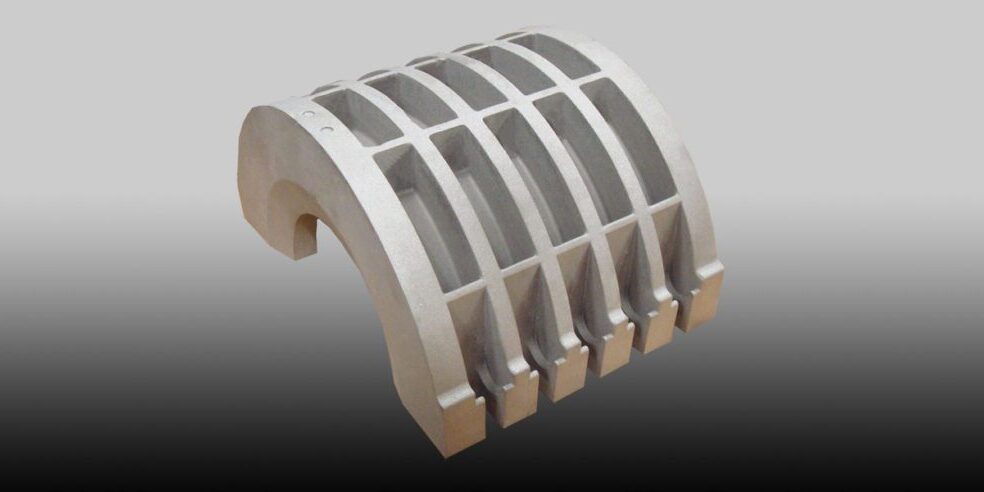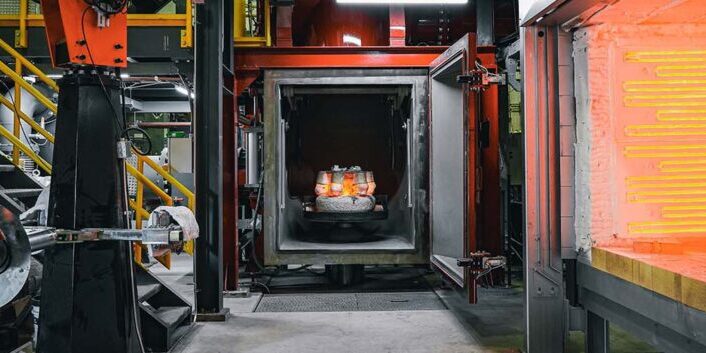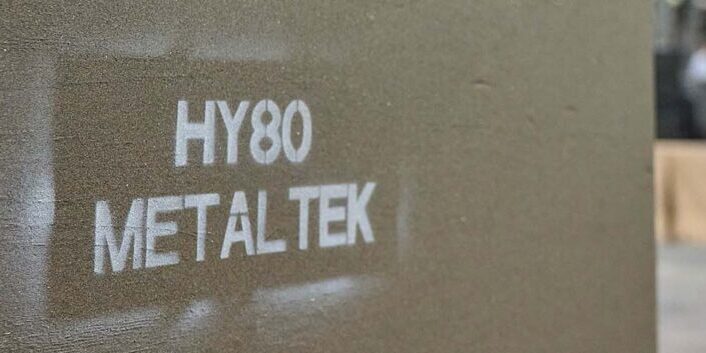Blog MetalTek International Glossary of Metal Casting Terms
By: Dave Olsen
If you Google “Casting Terminology”, you get over 50 million results. Some of the results will show you a never-ending list of terms so here is a reduced list of select terms that you should be familiar with as a current or potential user of metal castings. To see a complete list of terms on our website, visit us here.
Glossary terms and definitions provided courtesy of the Steel Founders’ Society of America.
Aging: A change in properties of metals and alloys which occurs slowly at room temperature and will proceed rapidly at higher temperatures. The change in properties is often, but not always, due to a phase change (precipitation), but never involves a change in chemical composition of the metal or alloy.
Annealing: Heating to and holding at a suitable temperature, followed by cooling at a suitable rate to lower the hardness or alter other mechanical or physical properties.
Argon Oxygen Decarburization (AOD): A secondary refining process in which argon, oxygen and nitrogen are injected into a molten bath of steel. The AOD process improves metal cleanliness and thus gives superior mechanical properties.
Brinell Hardness: The value of hardness of a metal on an arbitrary scale representing kg/mm², determined by measuring the diameter of the impression made by a ball of given diameter applied under a known load. Values are expressed in Brinell Hardness Numbers, BHN.
Charpy Impact Test: A pendulum-type single-blow impact test in which the specimen, usually notched, is supported at both ends as a simple beam and broken by a falling pendulum. The energy absorbed in fracture, as impact strength or notch toughness.
Core: A performed sand aggregate inserted in a mold to shape the interior or that part of a casting which cannot be shaped by the pattern.
Crack, Hot Tear: A rupture occurring in a casting at or just below the solidifying temperature by a pulling apart of the soft metal, caused by thermal contraction stresses.
Creep: The flow or plastic deformation of metals held for long periods of time at stresses lower than the normal yield strength. The effect is particularly important if the temperature of stressing is near the recrystallization temperature of the metal.
Cross Section: A view of the interior of an object that is represented as being cut in two, the cut surface presenting the cross section of the object.
Deep Etching: Macroetching; etching for examination at a low (less than 10X) magnification, in a reagent that attacks the metal to a much greater extent than normal for microscopic examination. Gross features may be developed; i.e., abnormal grain size, segregation, cracks, or grain flow.
Deoxidation: Removal of excess oxygen from molten metal, usually accomplished by adding materials with a high affinity for oxygen, the oxides of which are either gaseous or readily form slags.
Dewaxing: The process of melting out the expendable wax pattern from an investment mold by the application of heat, usually at temperatures less than 250°F (121)°C).
Elongation: Amount of permanent extension near the fractures in the tensile test; usually expressed as percentage of original gage length.
Gating System: The complete assembly of sprues, runners and gates in a mold through which steel flows before entering the casting cavity.
Hardness: Resistance of a material to indentation as measured by such methods as Brinell, Rockwell, and Vickers. The term hardness also refers to stiffness of a material, or its resistance to scratching, abrasion, or cutting.
Heat Treatment: A combination of heating and cooling operations applied to a metal or alloy to produce desired properties and microstructures.
Hot Tear: A crack or fracture formed prior to completion of metal solidification as a result of hindered contraction. A hot tear is frequently open to the surface of the casting and is commonly associated with design limitations.
Inclusions: Nonmetallic materials in a metal matrix. Sources include reoxidation, refractories, slag, and deoxidization products.
Ingot: A mass of metal cast to a convenient size and shape for remelting or hot working.
Liquid Penetrant Testing: A nondestructive testing method suitable for evaluating the surface integrity of non-magnetic and ferro-magnetic parts.
Magnetic Particle Inspection: A nondestructive method of inspecting the surface integrity of ferromagnetic materials.
Mechanical Properties: Properties of a material that reveal its strength and elastic behavior.
MIL STD: United States Government military standards, specifications, usually requiring rugged, exacting testing, equal to the exigencies of combat usage.
Modell Number: A value giving a measure of wear resistance.
Parting Line: A line on a pattern or casting corresponding to the separation between the cope and drag portions of a sand mold.
Phase Diagram: A graphic representation of the equilibrium temperature and composition limits of phase fields reactions in an alloy system. In a binary system, temperature is usually the ordinate and composition the abscissa. Ternary and more complex systems require several two-dimensional diagrams to show the temperature – composition variables completely. In alloy systems, pressure is usually considered constant, although it may be treated as an additional variable.
Pitting: A form of wear characterized by the presence of surface cavities, the formation of which is attributed to processes such as fatigue, local adhesion, cavitation or corrosion.
Precipitation Heat Treatment: Any of the various aging treatments conducted at elevated temperatures to improve certain mechanical properties through precipitation from solid solution.
Quenching: Rapid cooling or hardening; normally achieved by immersion of the object to be hardened in water, oil, or solutions of salt or organic compounds in water.
Revert: Recycled sprues, gates, risers, defective castings and machine chips.
Rigging: Gates, risers, loose pieces, etc., needed on the pattern to produce a sound casting.
Riser: Reservoir of molten metal from which casting feeds as it shrinks during solidification.
Runner: A channel through which molten metal or slag is passed from one receptacle to another; in a mold, the portion of the gate assembly that connects the downgate, or sprue, with the casting ingate or riser. The term also applies to similar portions of master patterns, pattern dies, patterns, investment molds, and finished castings.
Runner Extension: In a mold, that part of a runner which extends beyond the farthest ingate as a blind end. It acts as a dirt trap since the first rush of metal along the runner will pick up any loose particles of sand or dirt and carry them into the extension (not into the mold cavity).
Runner Riser: A conventional runner, usually in the horizontal plane, which permits flow of molten metal to the ingate, and is large enough to act as a reservoir to feed the casting.
Runout: A casting defect caused by incomplete filling of the mold due to molten metal draining or leaking out of some part of the mold cavity during pouring; escape of molten metal from a furnace, mold, or melting crucible.
Shakeout: 1) The operation of removing castings from the mold 2) a mechanical unit for separating the molding materials from the solidified metal casting.
Shrinkage: 1) Liquid, contraction in volume as metal cools to solidification, 2) solidification, contraction in volume when the metal passes from the liquid to the sold at the freezing point (may expend over a range), 3) solid, the contraction on cooling from freezing point to normal temperature, 4) the decrease in dimension in clays occurring when drying at 100°C (212°F) and even more so on firing, 5) reduction in dimension of refractory material during heating.
Skimming: Removing or hold back dirt or slag from the surface of the molten metal before or during pouring.
Slurry: A term loosely applied to any clay-like dispersion. It may be used to wash ladles or other refractory linings to impart a smooth surface; as a bonding addition to molding sand, as a thin loam over specially made molds, or as a mixture to fine joints or cracks of a core, etc.
Temper: 1) Reheating hardened, normalized, or mechanically worked steel to a temperature below the critical range to soften it and improve impact strength. 2) The moisture content of a sand at which any certain physical test value is obtained, e.g., temper with respect to green compressive strength, permeability, retained compressive strength, etc. 3) To mix material with enough liquid to develop desired molding properties.
Tensile Strength: The maximum stress in uniaxial tension testing, which a material will withstand prior to fracture. The ultimate tensile strength is calculated from the maximum load applied during the test, divided by the original cross-sectional area.
Toughness: The ability of the metal to absorb energy and to deform plastically during fracture. Toughness values obtained in testing depend upon the test temperature, the rate of loading, the size of the test specimen, as well as the presence of a notch and its acuity.
Upgrading: In castings, the removal and repair of discontinuities to raise the quality level of the casting beyond that which can be economically achieved by good foundry practice.
Wax Pattern: 1) A precise duplicate, allowing for shrinkage, of the casting and required gates, usually formed by pouring or injecting molten wax into a die or mold, 2) wax molded around the parts to be welded by a termite welding process.



